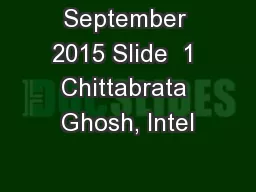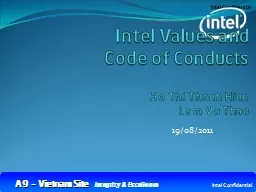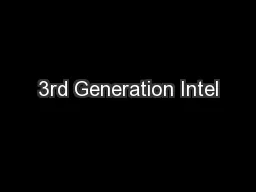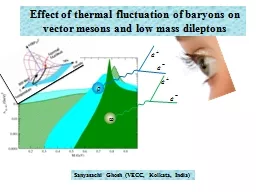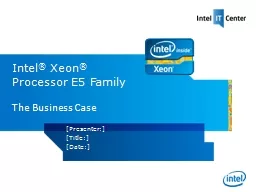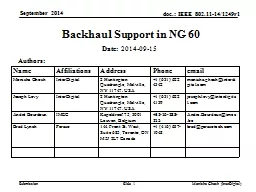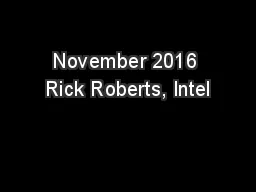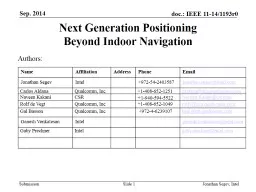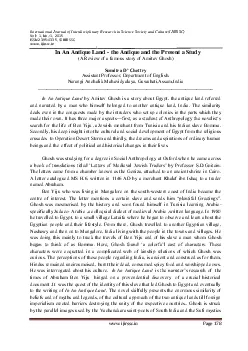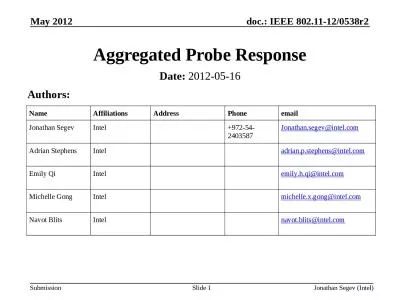PPT-September 2015 Slide 1 Chittabrata Ghosh, Intel
Author : tatiana-dople | Published Date : 2018-10-30
Discussion on Deep and Shallow Sleep States Date 20150914 Authors Name Affiliations Address Phone Email Ghosh Chittabrata Intel 2200 Mission College Blvd Santa
Presentation Embed Code
Download Presentation
Download Presentation The PPT/PDF document "September 2015 Slide 1 Chittabrata Ghos..." is the property of its rightful owner. Permission is granted to download and print the materials on this website for personal, non-commercial use only, and to display it on your personal computer provided you do not modify the materials and that you retain all copyright notices contained in the materials. By downloading content from our website, you accept the terms of this agreement.
September 2015 Slide 1 Chittabrata Ghosh, Intel: Transcript
Download Rules Of Document
"September 2015 Slide 1 Chittabrata Ghosh, Intel"The content belongs to its owner. You may download and print it for personal use, without modification, and keep all copyright notices. By downloading, you agree to these terms.
Related Documents

